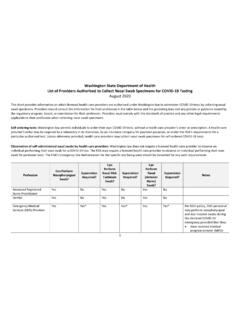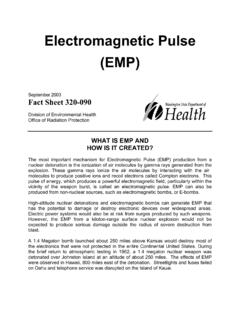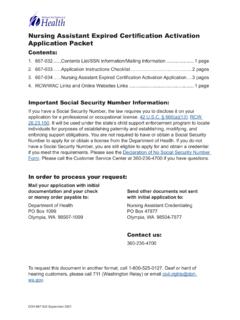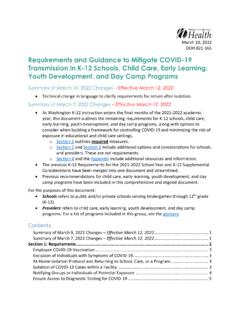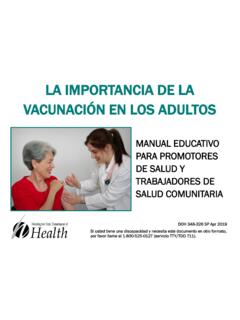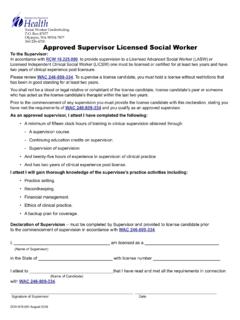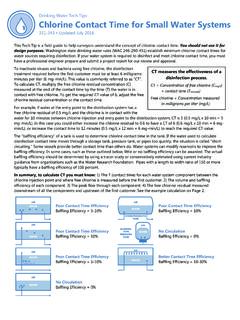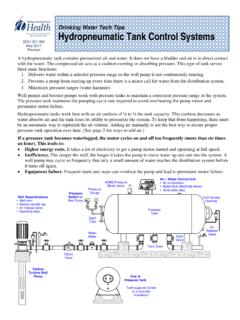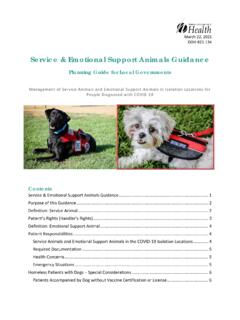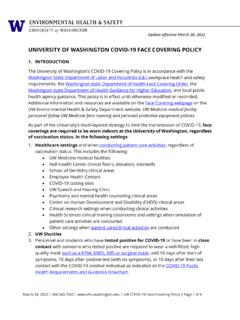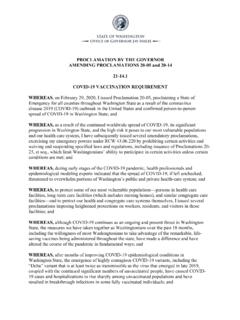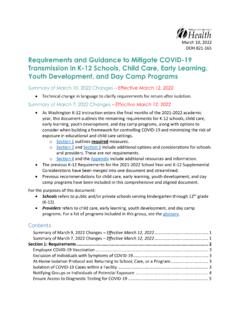Transcription of Reported COVID-19 Reinfections in Washington State
1 Reported COVID-19 Reinfections in Washington State Washington State Department of health October 12, 2022. 1. Page Break To request this document in another format, call 1-800-525-0127. Deaf or hard of hearing customers, please call 711 ( Washington Relay) or email Publication Number: 421-024. For more information or additional copies of this report: Disease Control and health Statistics Public health Outbreak Coordination, Informatics, and Surveillance 1610 NE 150th Street, MS: K17-9. Shoreline, WA 98155. Phone: 206-418-5700 (24-hour contact for local health jurisdictions only). Email: 2. Page break Reported COVID-19 Reinfections in Washington State Washington State Department of health October 12, 2022. This report provides a summary of the number of individuals Reported to the Washington State Department of health (DOH) as infected with COVID-19 more than once. We refer to these individuals as reinfected.
2 This report includes information on hospitalizations and deaths, demographics, and trends over time of people with a reinfection where DOH has information about both infection events. NOTE: DOH can only identify people with reinfection if both their original infection and their second infection were diagnosed by a COVID-19 test and Reported to DOH. Since many COVID-19 infections are asymptomatic and not diagnosed by a test, DOH will not be able to identify those individuals as reinfected. As a result, the number of people DOH reports as reinfected, hospitalized or died from a reinfection is likely lower than the actual number of reinfection to this, DOH does not directly compare people identified as reinfected to those identified as only having COVID-19 once. In general, reinfection means a person was infected once with the virus that causes COVID-19 , recovered, and then later became infected again. We are still learning about COVID-19 and the duration and strength of immunity following infection with this virus.
3 Based on what we know from similar respiratory viruses, we expect some COVID-19 Reinfections to occur. The risk of reinfection is likely dependent on a variety of factors including: The risk of exposure to other people with COVID-19 . COVID-19 vaccination status. Patient characteristics (such as underlying health conditions). This risk may change over time as immunity wanes or as new variants emerge. Ongoing COVID- 19 studies will help us understand more about cases of reinfection. For disease surveillance purposes, a person with a Reported reinfection is an individual with two positive COVID-19 test results (molecular or antigen) Reported to DOH where the tests were performed at least 90 days apart. In addition, if genetic sequencing of respiratory samples from a patient's first (or primary) infection and most recent infection identifies different variants, they are considered a confirmed reinfection regardless of the amount of time between positive tests.
4 DOH adopted this definition on September 1, 2021. 3. This report includes information on all people with a Reported reinfection beginning on September 1, 2021. Some people with Reinfections may be incorrectly identified as having primary infections if they were never tested for COVID-19 during their first infection or if the test information was not Reported to DOH. When COVID-19 infections are not Reported to DOH, Reinfections may be underreported. Data from people with primary infections are likely missing because: Many people with COVID-19 are not tested, often because they're asymptomatic or have only mild symptoms. Many at-home tests are not sent to labs for confirmation and those result may not be Reported to the State . Learn more about how to report a positive at-home test here: Testing for COVID-19 : Washington State Department of health . When primary infection data are missing, the data on Reported Reinfections will be underestimated and it may appear that Reinfections are less common than they truly are.
5 4. Page break Key findings Since September 1, 2021 in Washington State : A total of 76,101 people had a Reported reinfection. Of those with Reported reinfection, 2,216 ( ) people were hospitalized. Of those with Reported reinfection, 217 ( ) people died. Reinfections and associated hospitalizations and deaths Number of Percent Number of Total people Percent hospitalizations reinfected who deaths in with a reinfected who in people with a were people with a reinfection* died**. reinfection* hospitalized reinfection**. 76,101 2,216 217 *During September 1, 2021 - October 1, 2022. **During September 1, 2021 - September 13, 2022. **Percent of 73,814 Reinfections from September 1, 2021 - September 13, 2022. If a person is reinfected with the virus, a prior infection does not provide complete protection against hospitalization or death. 5. Page break Weekly counts of Reinfections From September 5, 2021 - September 24, 2022.
6 The number of people with a COVID-19 reinfection rapidly increased starting in mid- December 2021, with a decrease in cases starting in mid-January 2022. The increase was likely due to: An increase in the number of people who experienced a primary infection and could now be reinfected. The rise and spread of the Omicron variant. The Omicron variant spreads more easily than the original virus that causes COVID-19 and the Delta variant. Early research also shows that Omicron can cause infection in those who have already recovered from a prior COVID-19 infection. The current COVID-19 vaccines protect against severe illness, hospitalizations, and deaths due to infection with the Omicron variant. However, breakthrough infections in people who are vaccinated are likely to occur. Waning immunity over time. 6. Page break Reinfections and associated hospitalizations by age group From September 1, 2021 - October 01, 2022.
7 People with a Population People with a Age group reinfection who Distribution reinfection were hospitalized 1,697,415. Age 0-17 10,841 ( ) 77 ( ). ( ). Age 18-34 1,763,828 (23%) 28,746 ( ) 416 ( ). 1,471,187. Age 35-49 19,657 ( ) 375 ( ). ( ). 1,442,332. Age 50-64 11,223 ( ) 492 ( ). ( ). 1,281,438. Age 65+ 5,634 ( ) 856 ( ). ( ). Unknown 0 (0%) 0 (0%). State total 7,656,200 (100%) 76,101 (100%) 2,216 (100%). Differences in testing due to workplace requirements, access to testing, and personal preferences regarding testing may be impacting Reported Reinfections by age. Differences in Reported Reinfections may be impacted by age-specific differences in vaccination behaviors and chronic diseases. Reported Reinfections occur in all age groups. The highest percentage of Reported Reinfections are among 18 to 34-year-olds. People 65 or older account for the largest group of patients with a Reported reinfection who were hospitalized.
8 7. Page break Methods Limitations to these data Accurately identifying and reporting Reinfections is challenging because identifying a person with a reinfection depends on identifying their first infection. People with a Reported primary or repeat infection are more likely to be symptomatic or work in occupational settings that receive regular testing that is Reported to public health , such as essential workers. Primary infection or reinfection may not be Reported for the following reasons: A person may not know when or if they had an infection, especially if they did not have any symptoms or if they experienced only mild symptoms. These individuals may not seek testing for COVID-19 . Over-the-counter test kits and home-based tests that are not sent to a lab may not be Reported to our system. In addition, the sensitivity of those tests might be different from confirmed lab tests and some cases may not be detected.
9 As a result, fewer primary infections and Reinfections will be Reported to our disease surveillance system. Over the counter and home-based tests also affect our ability to detect those who become reinfected. To identify a person with a reinfection, a person must be tested for both episodes of infection and these test results must be Reported to local public health departments or to DOH to be captured in our surveillance system. Testing and reporting COVID-19 infections are more likely to occur when someone is hospitalized or dies. These limitations result in an underreporting of Reinfections overall and the amount of underreporting may differ based on how severe a person's COVID-19 illness is. Someone who is hospitalized or dies is more likely to be tested for COVID-19 by a laboratory than those who experience mild or no symptoms. Due to underreporting, the number and percentage of Reinfections are likely smaller than they would be if all people with primary infections were Reported .
10 As a result, DOH does not directly compare people identified as reinfected to those identified as only having COVID-19 once. Published studies are the best source of information about risks and outcomes associated with reinfection. Definitions COVID-19 Case COVID-19 case data in this report come from the Washington State Disease Reporting System (WDRS). A case' is defined as an individual who tested positive for COVID-19 by either molecular (such as PCR) or antigen test. Most antigen tests are rapid tests and provide results in approximately 15 minutes to 1 hour. 8. COVID-19 Hospitalization A COVID-19 hospitalization is an individual identified as hospitalized in WDRS using either case investigation data or links with the Rapid health Information Network (RHINO) records. COVID-19 Death COVID-19 deaths are Reported to the State by health care providers, medical examiners or coroners, local health departments, or others to the official vital records database, Washington health and Life Events System (WHALES).
